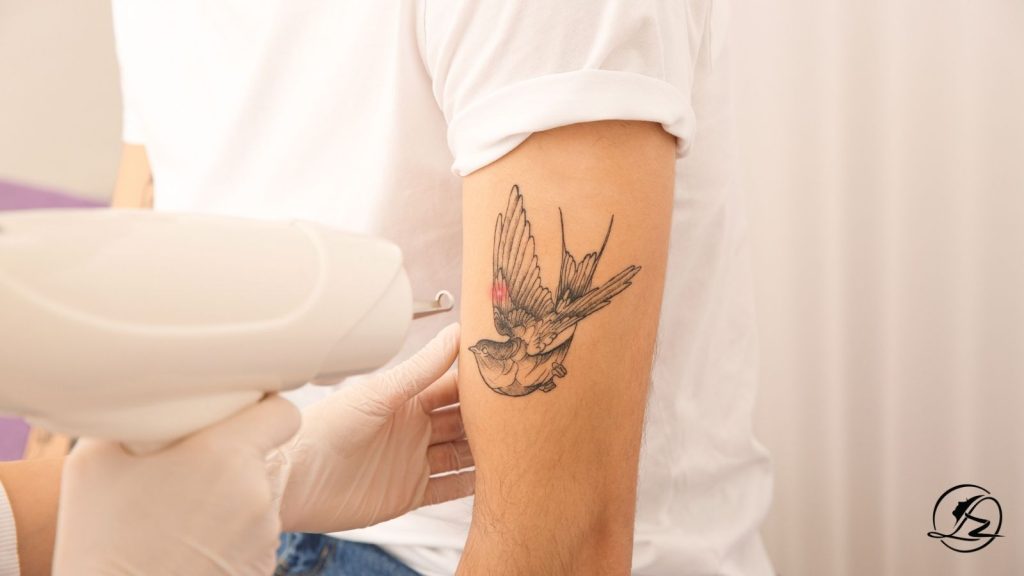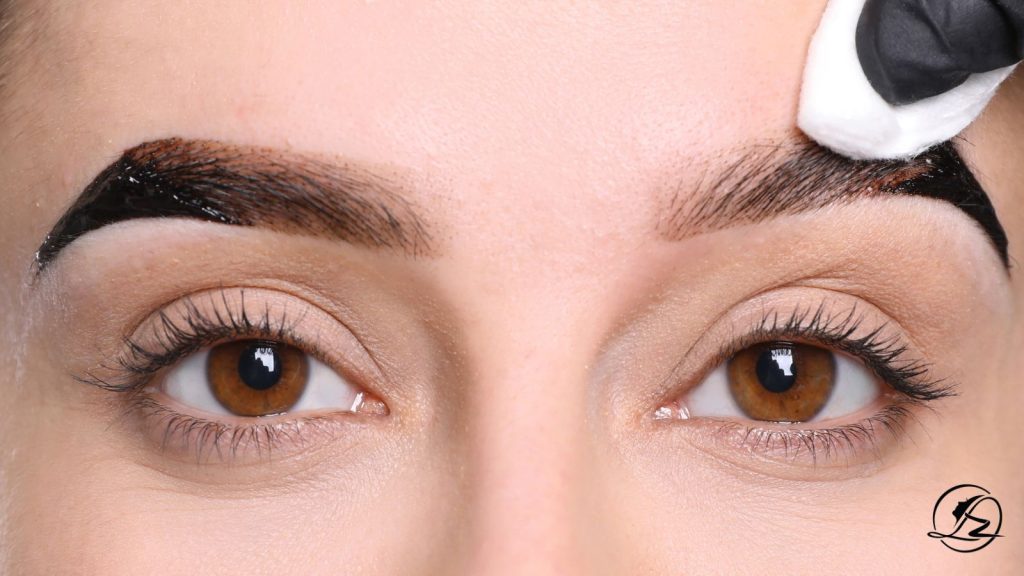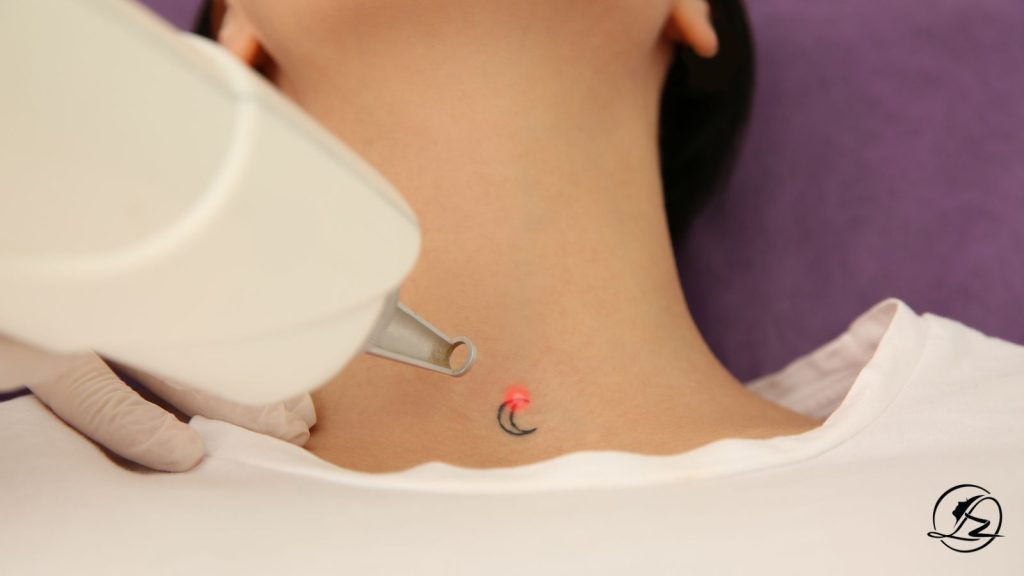Laser tattoo removal has become the most popular method for removing unwanted tattoos. While many people are eager to get rid of tattoos that no longer fit their style or preferences, one of the most common concerns is whether the procedure is painful. The simple answer is: yes, laser tattoo removal can hurt, but the level of discomfort varies depending on several factors.
This article will explore how painful the process is, what factors affect the pain levels, and what you can do to manage the discomfort. We will also cover essential aftercare tips to help your skin heal properly after each session.
How Painful is Laser Tattoo Removal?
Laser tattoo removal is often compared to the pain experienced when getting the tattoo in the first place. Some people describe the sensation as feeling like a rubber band snapping against the skin, while others liken it to small pinpricks. The pain level can range from mild to moderate, depending on your pain tolerance, the size of the tattoo, and other factors.
What Happens During the Procedure?
During laser tattoo removal, a high-powered laser emits pulses of light that penetrate the skin and break down the ink particles in the tattoo. The laser targets the pigments in the tattoo, shattering them into smaller pieces that your body’s immune system will gradually eliminate.
This process creates a sensation of heat and discomfort as the laser works on the skin’s surface. While it’s not a relaxing experience, it is generally tolerable for most people, especially with the help of numbing options and professional care.
Factors that Affect Pain Levels
Several factors can influence how painful the laser tattoo removal process is for you. Understanding these factors can help you better prepare for the experience.
1. Tattoo Location
The location of your tattoo plays a significant role in how much discomfort you feel during the removal process. Areas with thinner skin or less fat tend to be more sensitive to the laser, such as:
- Ankles
- Wrists
- Ribcage
- Fingers
- Feet
Conversely, areas with more flesh or muscle, like the upper arms, thighs, and back, tend to be less sensitive, making the procedure slightly less painful.
2. Tattoo Size and Density
Larger tattoos that cover more skin require longer treatment sessions, meaning more time under the laser. Additionally, dense or deeply pigmented tattoos may need more laser energy to break down the ink, which can result in more discomfort. Tattoos with multiple layers or colors may also take longer to treat, increasing the duration of the session.
3. Color of the Ink
Different ink colors respond to the laser differently. Black ink absorbs the laser light the best, making it easier and faster to treat. Lighter colors like yellow, white, and light blue are harder to remove, and the laser may need more passes over the area, potentially leading to more discomfort.
4. Skin Type and Sensitivity
Your skin type and sensitivity can also influence how painful the procedure feels. People with sensitive skin may feel more discomfort during and after the treatment. Darker skin tones may also require different lasers or settings, which can alter the sensation experienced during removal.
5. Pain Tolerance
Everyone has a different pain threshold. Some people might find the laser removal process quite uncomfortable, while others may barely feel it. If you have a low pain tolerance, you might find laser tattoo removal more challenging.
Pain Management Options
While laser tattoo removal can be uncomfortable, there are several pain management options to help make the process more bearable.
1. Topical Numbing Creams
Before your session, most practitioners will apply a numbing cream or gel to the treatment area. These creams contain anesthetic agents like lidocaine that help numb the skin, reducing the sensation of pain during the procedure. The cream is usually applied about 20-30 minutes before the laser session to give it time to take effect.
2. Cooling Devices
Many laser tattoo removal clinics use cooling devices to help manage pain. These machines blow cool air directly onto the treatment area during the procedure, helping to soothe the skin and reduce the heat and discomfort caused by the laser.
3. Over-the-Counter Pain Relievers
Some people choose to take an over-the-counter pain reliever, like ibuprofen or acetaminophen, before their session to help manage discomfort. However, it’s important to avoid aspirin as it can thin the blood and increase the risk of bruising or bleeding during the procedure.
4. Nerve Blocks or Local Anesthesia
In some cases, for larger or more sensitive tattoos, a practitioner may offer local anesthesia or a nerve block to completely numb the area. This method is less common but can be highly effective for patients with a low pain tolerance or particularly painful tattoo locations.
What to Expect After Laser Tattoo Removal
The pain doesn’t always end when the laser is turned off. After a session, your skin will likely feel sore and sensitive, similar to how it feels after a sunburn. Proper aftercare is essential to help your skin heal and prevent infection or scarring.
Immediate Aftercare Steps
- Apply a Cold Compress
- After the session, your practitioner may apply a cold compress to the treated area to help reduce swelling and soothe the skin. You can continue using cold compresses at home if the area feels particularly sore.
- Use a Healing Ointment
- Your practitioner will likely recommend an antibiotic ointment or a healing cream like Aloe Vera or Aquaphor. This helps protect the skin from infection and keeps the area moisturized as it heals.
- Keep the Area Clean
- Gently wash the area with mild soap and water and pat it dry. Avoid scrubbing or using harsh products on the treated skin. This will help prevent irritation and allow the skin to heal.
- Avoid Sun Exposure
- Direct sunlight can irritate the treated area and cause the pigment to darken. Make sure to keep the area covered or apply broad-spectrum sunscreen with SPF 30 or higher once the skin starts healing. Sun protection is essential to avoid hyperpigmentation and maintain the results of the treatment.
What to Expect During Healing
- Swelling and Redness
- It’s normal for the treated area to be red and slightly swollen for the first 24 to 48 hours after a session. This is a natural inflammatory response as the body starts to heal the skin and process the broken-down ink particles.
- Blistering
- Small blisters may form over the tattoo site. While they may look alarming, blisters are a normal part of the healing process and should be left intact. Do not pop or pick at them, as this could lead to infection or scarring.
- Scabbing
- As the skin heals, you may also notice scabbing. Again, do not pick at the scabs, as this could disrupt the healing process and increase the risk of scarring. The scabs will fall off naturally in a few days.
- Itching
- It’s common to experience some itching as the skin heals. While this can be uncomfortable, it’s important to resist the urge to scratch. Applying a gentle moisturizer or ointment can help alleviate the itching.
Long-Term Aftercare Tips
- Stay Hydrated
- Keeping your body hydrated helps your skin heal faster and more efficiently. Drink plenty of water, especially in the days following your laser removal session.
- Wear Loose Clothing
- Avoid tight or rough clothing that could rub against the treated area, causing irritation. Opt for soft, loose fabrics that allow your skin to breathe.
- Follow-Up Treatments
- Laser tattoo removal typically requires multiple sessions, spaced about 4 to 6 weeks apart. Your skin needs time to heal between treatments, so follow your practitioner’s recommended schedule for optimal results.
Conclusion
While laser tattoo removal can be uncomfortable, it’s a highly effective method for getting rid of unwanted tattoos. The level of pain varies depending on factors like the tattoo’s location, size, and color, but most people find the discomfort manageable, especially with the help of numbing creams and other pain management techniques.
The key to minimizing pain and ensuring successful tattoo removal is to choose a reputable practitioner and follow their aftercare instructions closely. With proper care, the treated area will heal well, and you’ll be one step closer to achieving clear, tattoo-free skin.



